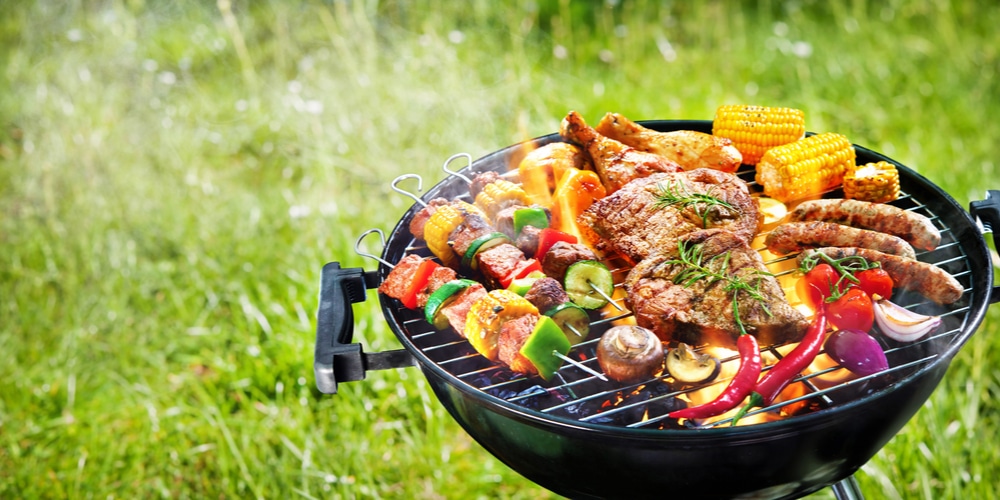How Long Does It Take to Get a Charcoal Grill Ready? Timely Tips & Techniques
Written By James Morgan
Barbecue enthusiasts know that the art of grilling is as much about the preparation as the cooking. One common question that arises, especially for those new to charcoal grilling, is how long does it take to get a charcoal grill ready. Understanding this helps ensure your food is cooked to perfection, and you're not left waiting around unnecessarily.
Getting a charcoal grill ready isn't rocket science, but there are essential steps that, if followed correctly, can mean the difference between a great barbecue and a frustrating experience. So, let's dive deep into the various factors that determine the time it takes to get a charcoal grill ready.

Understanding the Basics of Charcoal Grilling
Before we delve into the specifics, let's clarify some fundamental aspects of charcoal grilling. Charcoal grilling involves lighting charcoal briquettes or lump charcoal to create heat. The heat from the charcoal cooks the food above it, often infusing it with a smoky flavor that's hard to beat.
Types of Charcoal
The type of charcoal you use significantly impacts the time it takes to get your grill ready. There are two main types:
- Briquettes: These are uniform in shape and size, ensuring consistent burning. They often contain additives to aid in ignition and prolonged burning.
- Lump Charcoal: Made from pure wood, lump charcoal burns hotter and faster than briquettes, providing a more natural smoky flavor.
Choosing the Right Charcoal
Your choice between briquettes and lump charcoal affects not just the flavor but also the preparation time. Lump charcoal typically heats up quicker, while briquettes offer a more extended, steady burn.
:max_bytes(150000):strip_icc()/faw-charcoal-grills-test-sns-slow-sear-original-kettle-22in-rkilgore-52-bf0d22a10dd74b019161b7f2551fe542.jpeg)
Setting Up Your Charcoal Grill
Proper setup is crucial to ensure your grill heats up efficiently. Here are the steps:
1. Clean Your Grill
A clean grill ensures better airflow, which translates to faster heating. Remove any ash or residue from previous grilling sessions.
2. Arrange the Charcoal
Place the charcoal in a pyramid shape or use a charcoal chimney starter. A chimney starter is often preferred because it allows for even heating.
3. Use Lighter Fluid or Chimney Starter
If you're using lighter fluid, apply it evenly over the charcoal and let it soak for a few minutes before lighting. If using a chimney starter, fill it with charcoal and light it from the bottom.

The Waiting Game: How Long Does It Take?
The burning question remainshow long does it take to get a charcoal grill ready? On average, it takes about 15-30 minutes. Several factors influence this timeline:
1. Weather Conditions
Wind, humidity, and temperature can impact how quickly your charcoal heats up. Windy conditions can accelerate the process, while humid or cold weather may slow it down.
2. Amount of Charcoal
The more charcoal you use, the longer it may take to get all of it evenly lit. However, more charcoal can also mean a hotter grill.
3. Type of Charcoal
As mentioned earlier, lump charcoal typically heats up faster but burns quicker. Briquettes take a bit longer but provide a steady burn.
4. Vent Settings
Adjusting the vents of your grill allows you to control the airflow, which can speed up or slow down the heating process.

Ensuring Your Grill is Ready
Knowing when your grill is ready is crucial. You don't want to start cooking before the coals are appropriately heated. Heres how you can tell:
1. Ash Coating
The charcoal should be covered in a thin layer of white ash. This usually indicates that it's reached the right temperature.
2. Hand Test
Hold your hand about 5 inches above the grill grate. If you can only keep it there for 2-3 seconds, the grill is ready for high-heat cooking. For medium heat, it should be 5-6 seconds.
3. Grill Thermometer
For a more precise measurement, use a grill thermometer. The ideal grilling temperature is usually between 450F and 550F for high-heat cooking.
Common Mistakes to Avoid
Preparation is key, but avoiding common mistakes can significantly reduce the time it takes to get your grill ready. Here are some pitfalls to steer clear of:
1. Using Damp Charcoal
Always store your charcoal in a dry place. Damp charcoal takes much longer to ignite and heat up.
2. Overloading the Grill
Too much charcoal can restrict airflow, leading to slower heating times. Use the right amount for your grill size.
3. Ignoring the Vents
Proper vent adjustment is crucial for maintaining the right airflow. Make sure the vents are open and unobstructed.
External Resource
For a more comprehensive guide on using a charcoal grill, check out Weber's Guide.
Internal Links
FAQs
How much charcoal should I use?
The amount of charcoal you should use depends on what you're cooking and how long you'll be grilling. For a standard grilling session, about 30 briquettes or a half-full chimney starter's worth of lump charcoal should suffice.
Can I reuse charcoal?
Yes, you can reuse charcoal. After grilling, close the vents to extinguish the coals and save them for next time. Reused charcoal lights faster and can still provide adequate heat.
Should I grill with the lid on or off?
This depends on what you're grilling. For quick-cooking items like burgers and steaks, it's usually best to keep the lid off. For foods that require longer cooking times, like chicken or roasts, keeping the lid on helps maintain a consistent temperature.
As an Amazon Associate, I earn from qualifying purchases.



